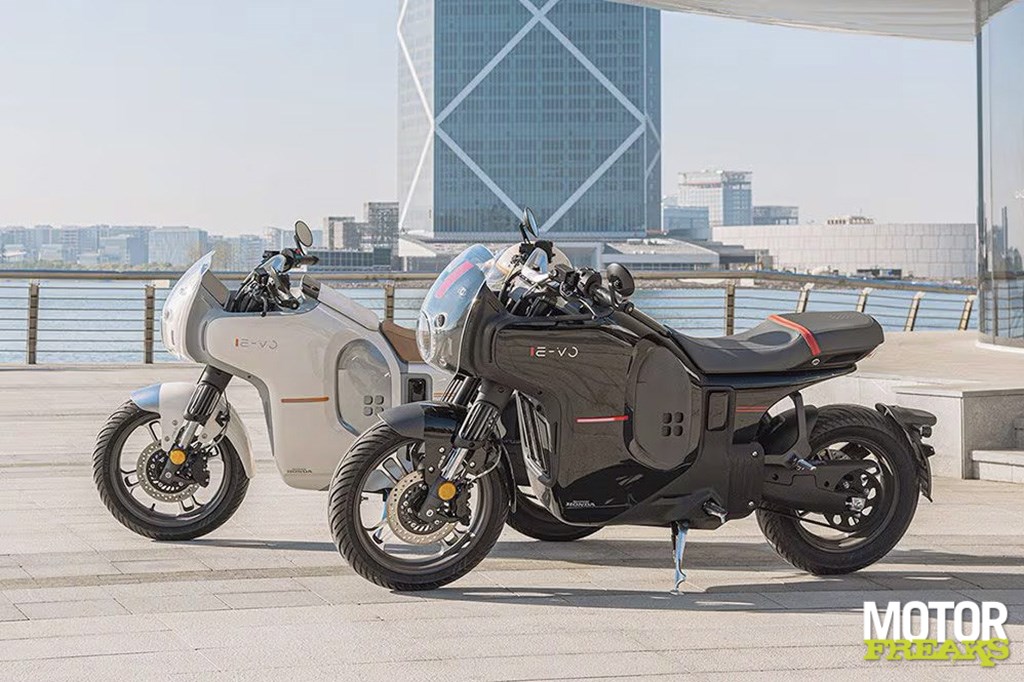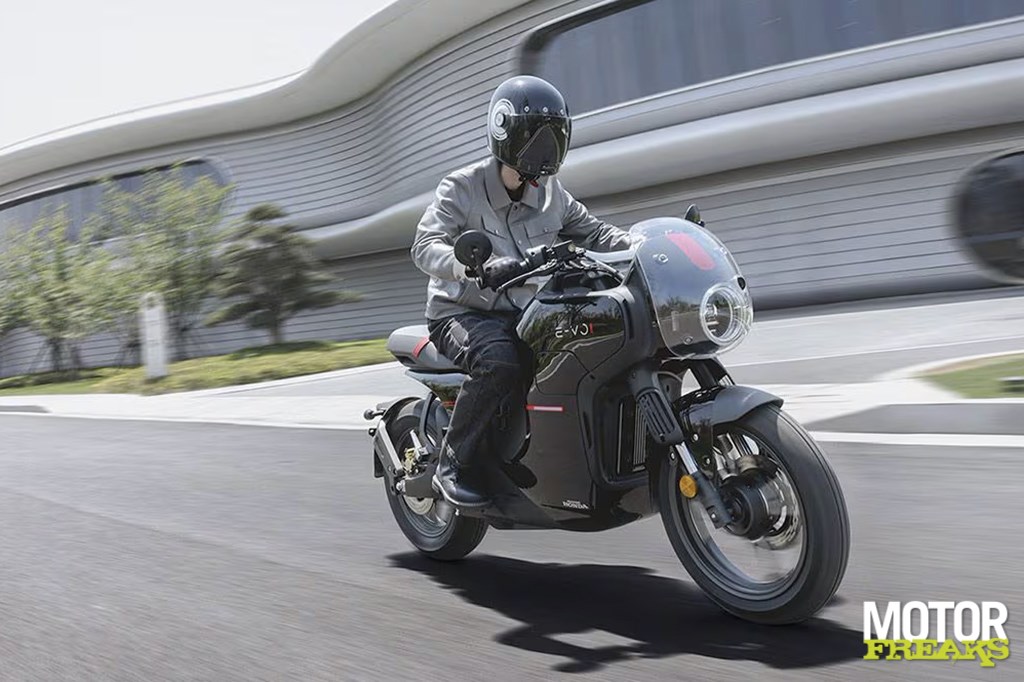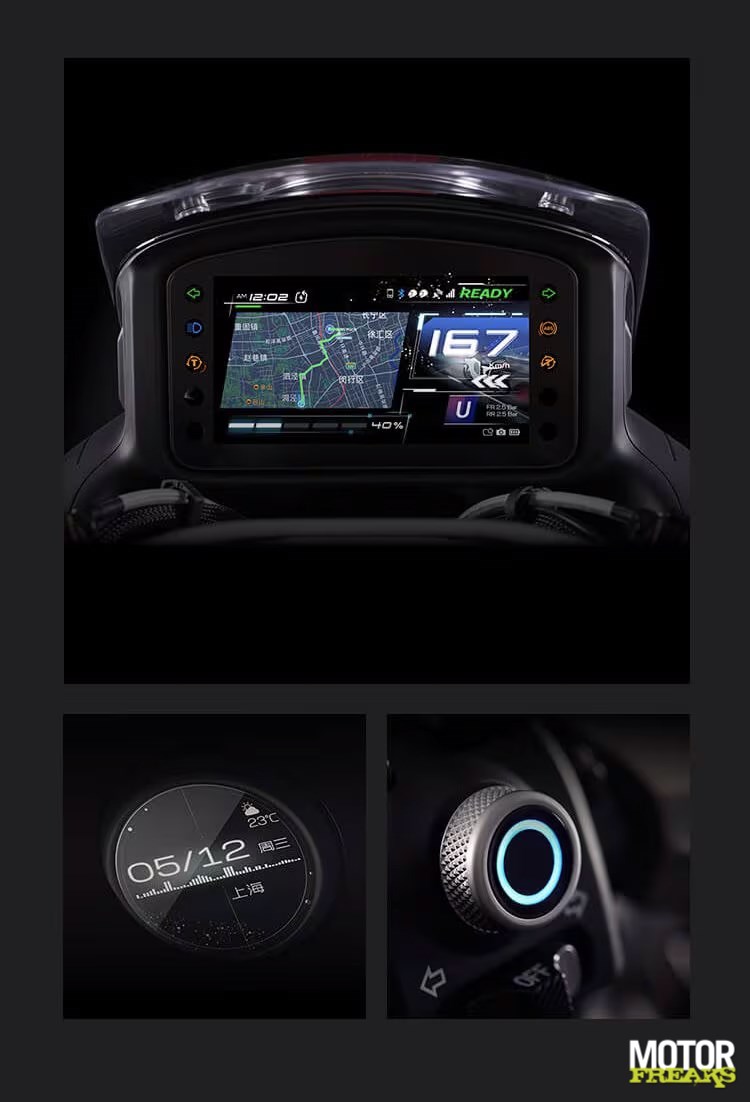After the engine had already been leaked in March, Honda has now officially launched the e-VO. As expected, the engine is only put on the market in China, via the Chinese partner Wuyang.

It has been two and a half years since Honda after Kawasaki as the second Japanese manufacturer committed to electric two-wheelers, with the announcement on the EICMA in Milan to introduce 10 or more EV engines worldwide by 2025.
Since that time, Honda has already taken careful steps with a handful of scooters on (changing) batteries and promised that the ECMA presented on the EICMA will go into production last year.
The E-VO is a product of Honda’s Chinese joint venture, Wuyang-Honda, and is initially aimed at the home market. Some other electric products from Wuyang-Honda, however, have already made the switch to international sales, in particular the U-Go scooter, which was the EM1 E: was on the world market, so the e-VO has a good chance of eventually being released on a larger scale.
With regard to dimensions, the e-VO has unusual proportions. The engine is larger than, for example, a Grom or Monkey, but is smaller than a normal mature motorcycle. The combination of a 16 “front wheel and 14” rear wheel sketches the image that it is larger than it actually is, but the 1,380 mm wheelbase, on the other hand, is relatively long.
With regard to performance, the e-VO is absolutely not an electric superbike, with an engine that is calculated on a continuous power of 8 kW and a peak power of 15.8 kW, or 21.2 hp. In its most powerful form, with three batteries, it is good for a claimed top speed of 120 km/h and a range of 170 kilometers below WMTC test protocols.

Honda claims that an acceleration of 0-50 km/h in 2.8 seconds and in the end it is the number that really matters in the city scenarios for which the engine is most suitable. The cheaper model with two batteries has a top speed of 110 km/h and can travel 120 kilometers with a full battery charge.
In contrast to some EVs with changeable batteries, the e-VO also has a built-in charger, so that it can be connected to a power outlet or powerful alternating current loaders for electric cars. On the most powerful charger that can be used, the version with 3 batteries needs 1.5 hours to ‘refuel’ from 20% to 80%.
Each battery is a 74V, 28AH unit, which means that the model has a capacity of 6.2kWh with three batteries, while the version with two batteries is doing with 4.1kWh. Unlike many Chinese electric bicycles, which often use engines mounted in the hub, the engine on the chassis is mounted with a belt drive to the rear wheel and offers three driving modes (normal, eco and sport) to change the balance between energy consumption and performance.
Although electric bicycles with 100 km/h and a range of more than 100 km are not new (for example, the Zero FX is in the same neighborhood), the e-VO clearly distinguishes itself on two points of machines with similar performance.
First, the badge on the side; This is a Honda, which means that it comes from the largest motorcycle manufacturer in the world. Secondly, there is the price in China around € 4,400 for the top version with three batteries, while the price of the cheaper version is around € 3,500.

Now that will certainly not be the price for which he – when the time – will be put on the market here, but it is certainly at the level of comparable (A1) ICE engines. And that for an engine that is also quite richly executed.
For example, the top model has standard dashcams front and rear (the basic version only), the rear of which can be displayed in the TFT dashboard when you are on the road, making the mirrors superfluous. There is NFC (Near Field Communication) or Bluetooth unlocking via a wipe of a keycard or a tap on a telephone app, plus the built -in option to link with DJI action cameras.
The top version also has standard tire stress control and all variants have traction control. An illuminated, serrated button with your right thumb gives iPod-like Scroll-en-click control for functions on the dashboard.
Honda has described the e-VO as the first of her “fun” electric bicycles (the capital use of Honda, not ours), with which she brings the production version of the EV Fun Concept that was shown on the EICMA last year, to the showrooms.
Given the problems with the sale of EV engines in the premium segment (Zero is growing marginal, Energica has already perished), the cheaply priced e-VO for the worldwide market could be a more attractive machine for a broader group of customers.

– Thanks for information from Motorfreaks.